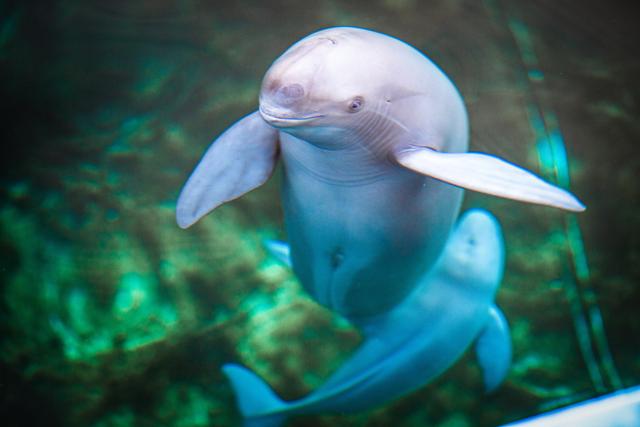Beijing: The main level of history of the main pollutant index of air
Author:Beijing released Time:2022.08.26
Last night, Chen Tian, secretary of the party group and director of the Beijing Ecological and Environment Bureau, Liu Meiyan and Li Zhiqi, a member of the Beijing CPPCC, and Li Zhiqi, jointly performed a live interview program of "Citizen Dialogue Talking on a Play Proposal", focused on Beijing's continued "one micro -gram" to control PM2. 5 and ozone pollution, promote the continuous improvement of air quality. The reporter was informed that since this year, the four major pollutants (PM2.5, PM10, nitric oxide, sulfur dioxide) have reached the best level at the same level since monitoring data.
According to Chen Tian, in 2021, under the circumstances of the regional air quality simultaneous improvement, in the case of favorable meteorological conditions, the quality of the atmospheric environment in Beijing has been significantly improved. Among them, PM2.5 dropped to 33 micrograms/cubic meters, PM10 was 55 micrograms/cubic meter, and nitric oxide dropped to 26 micrograms/cubic meter, especially sulfur dioxide low to 3 micrograms/cubic meter. Last year, the six major pollutants in Beijing's atmosphere all reached the national secondary standard for the first time. The number of heavy pollution days in Beijing has fallen from 58 days in 2013 to 8 days last year.
"Beijing's comprehensive air quality has also contributed Beijing's experience to the governance of atmospheric pollution in the world." Chen Tian said that over the past 20 years, the total production value, permanent population, total amount of motor vehicles, and energy consumption in Beijing have increased significantly. , But it is very difficult to achieve continuous stability of air pollutants.
Taking PM2.5 as an example, from 2013 to 2021, PM2.5 in Beijing had dropped by 60 % in 9 years. "Beijing has decreased at a rate of 7 micrograms per cubic meter per year. This decline is rare internationally and has also been widely praised. The UN Environmental Planning Department also said that Beijing is a model, and the atmosphere of Beijing is the atmosphere. The experience of pollution governance has been incorporated into the United Nations practice case and promoted around the world. "
So far this year, Beijing's air quality has maintained a trend of continuing improvement. From January to July, the average PM2.5 concentration in Beijing was 29 micrograms/cubic meters, a decrease of 21.6%from the same period last year. As of August 24, the average concentration of Beijing PM2.5 was 28 micrograms/cubic meter, "another 1 micrograms, a year -on -year decrease of 20%."
In addition to PM2.5, as of the end of July, the average PM10 concentration of Beijing PM10 was 53 micrograms/cubic meter, a year -on -year decrease of 14.5%; nitric oxide was 21 micrograms/cubic meters, a year -on -year decrease of 16%; sulfur dioxide was already 3 micrograms/micrograms/micrograms/microblog/microblog/microblog/micrometer/micrograms/microphone/microblog/microblog/microblog/microblog/microblog/microblog/microblog/microblog/microblog/microblog/microblog/microblog/microblog/microblog/microblog/microphone is 3 micrograms/micrograms/microphone/microphone. cubic meter. These four major pollutants have reached the best level of the same period since monitoring data.
Chen Tian said that the improvement of air quality depends on many factors, including in Beijing for many years. "If only from the perspective of governance ideas, I think it mainly adheres to the three principles. One is precise pollution, the other is scientific pollution, and the third is to treat pollution according to law."
Chen Tian pointed out that precision pollution control mainly refers to some targeted focus, focusing on governance PM2.5 pollution, focusing on governance in the southern region, and involving energy, industry, motor vehicles, dust, etc. in key areas. Scientific pollution control mainly refers to scientific research and judgment, analyzing the cause of reasons, and grasping the laws of changes in the concentration of pollutants; scientific pollution control also includes scientific management, relying on scientific and technological means for pollution control. The pollution control according to law is mainly reflected in the use of the strictest system and the strictest legal system for protection and governance. (Source: Beijing Youth Daily)
- END -
Tour "Emeishan" in Chengdu, new on Jinjiang Park!Live Water Park opened this Friday

On July 26, the Red Star Journalist learned from the Chengdu Jinjiang Park Develop...
"F9c22", hello, warm welcome

Xinhua News Agency, Wuhan, July 6 (Reporter Wang Ziyi, Tan Yuanbin) Sometimes divi...